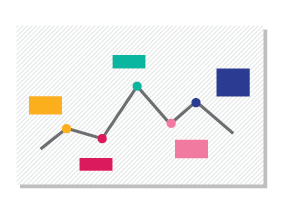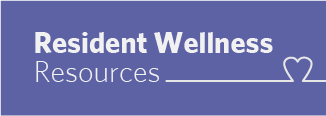 Depending on your site, you will be asked to do either a Quality Improvement Project (QI) or a Continuous Quality Improvement (CQI) Project. Talk to your scholar site faculty to see which project you are required to do. In general, this project is due at the end of your Family Practice block in your R1 year, although this may vary among sites.
Depending on your site, you will be asked to do either a Quality Improvement Project (QI) or a Continuous Quality Improvement (CQI) Project. Talk to your scholar site faculty to see which project you are required to do. In general, this project is due at the end of your Family Practice block in your R1 year, although this may vary among sites.
For all residents, completion of the QI/CQI is required in order to obtain your R2 salary.
If you doing your family practice block in a Health Authority facility, please ensure you get consent from the Health Authority to access the data for this purpose.
More information on PSP can be found here: https://www.doctorsofbc.ca/managing-your-practice/quality-improvement/practice-support-program-psp
Option 1: Quality Improvement (QI) Project
Your Quality Improvement Project involves assisting your preceptor in his/her clinic-based QI efforts. You and your preceptor should choose the domain of practice improvement collaboratively and should plan every step before starting. It is essential that your preceptor and practice staff are involved. Preceptors will receive MainPro education credit for this R1 activity.
Quality improvement processes and practice audits are activities recognized by the College of Family Physicians of Canada (CFPC) as necessary skills for family doctors. The QI project is a mandatory part of your training and must be completed before the end of first year; and this activity is intended to develop your awareness and skills for a lifelong commitment Quality Improvement – to identify and respond to areas where safety, efficiency, and/or quality need addressing.
The following steps are recommended to complete your Quality Improvement Project.
A complete list of domains for residents' QI is available in the Quality in family practice, Book of Tools (2010). Here is a partial list:
- Access to the office and doctor
- Mental and physical comfort and safety
- Prevention of and screening for disease
- Diagnosis and treatment of specific diseases or symptoms
- Maternity and newborn care
- Chronic disease management and end-of-life care
- Communication, co-ordination and timely follow-up
- Medical record
- Privacy and Ethical practice
All questions need a standard of comparison. Sometimes you will find many (often differing) standards or guidelines on a topic and sometimes you will find none. If you can't find one, speak to your site-faculty. You should normally use the most recent and geographically regional guideline, if it is appropriately evidence-based In other words, a provincial guideline should take precedence over a national guideline which should take precedence over an international guideline, but exceptions occur if the guideline is more recent or relevant.
You should review and appraise the evidence supporting the guideline. Its applicability to the practice should be established and its validity discussed. Also, just because a certain group of experts or governing body recommends a certain practice standard, there could be many reasons why that standard may not be 100% achievable in real-life family practice. For this reason, it would be helpful to find comparative data from other Canadian practices where this standard has been applied. You will be expected to search the health literature to find such data, if available.
The following are possible methods, but this will really depend on the question being asked:
- Inspection or testing of facilities, workflow, and/or equipment
- Survey or interview of patients and/or staff
- Direct observations of the physician-patient encounter
- Chart audit: You should determine in advance what measurements or observations will be copied from the charts. At least 10 charts should be randomly selected within the pre-defined inclusion criteria. (Sampling may not be necessary with an EMR. Depending on the information desired, some EMRs might easily provide the measurements or observations from the complete patient database)
QI within family practice offices fall under the umbrella of Quality Assurance and Improvement Studies that do not require research ethics board review "when used exclusively for assessment, management or improvement purposes do not constitute research". As long as you collaborate with your preceptor to audit only your preceptor's practice and remove identifying information from the patient data you collect and only use this information to improve the practice in a way that current evidence indicates will benefit all eligible patients in the practice, you will be conducting an ethical audit.
The results should be presented in tabular or graphical form. Patient names should not appear in the report.
Compare your results with the standard and with any other audits you have found in the literature. Analyze why your results differ. Is there room for improvement?
Read in the Quality Improvement Toolkit about various ways of mapping improvement ideas. You should discuss your draft results with your preceptor and his/her office staff. In a collaborative manner, brainstorm with your preceptor and his/her office staff ideas that might be feasible for improvement. If improvement is warranted, create a step-by-step written plan that is feasible for your preceptor's practice. Document this plan in point form in your written report. Implement your intervention and re-audit to determine its impact.
The report should be no more than four pages and follow the QI Report Form Template
Remember to include your data collection spreadsheet.
In your presentation, include details of the collaborative processes that you engaged in with your preceptor and his/her staff to create a plan for practice improvement. Faculty can use the QI Assessment Form to evaluate the projects. Remember to also present your findings to your clinic preceptor and office staff.
QI Project FAQs for Clinical Preceptors
Option 2: Continuous Quality Improvement (CQI) Project
Quality improvement processes and practice audits are activities recognized by the College of Family Physicians of Canada (CFPC) as necessary skills for family doctors.
The CQI strives to strike a balance between program requirement and adult learning needs, with intent to move towards the Triple C Competency-based Curriculum.
- CQI activities are intended to develop your awareness and skills for a lifelong commitment to Continuous Quality Improvement – i.e. identifying and responding to areas where safety, efficiency and quality can be improved. CQI are intended to be “real” activities, not product-driven projects enacted for the sake of getting through a curricular requirement.
- CQI activities and documentation should occur throughout your block time. The documentation is part of the process, not a product created for assessment. Process documentation will be used secondarily to demonstrate fulfillment of curricular requirements: i.e. objectives, planning and progress forms are to be submitted to your Research Faculty, approximately midway and also one full week prior to the end of your family practice rotation.
- It is recommended that residents “engage with” (replaces the word and concept: “present to”) their practice colleagues at least once during their rotation. This should be part of the practice engagement process, and the nature of “engagement” will depend upon the improvement activities. Examples include group problem solving and consultation, “discovery” (e.g. process mapping or brainstorming) session, a means to translate knowledge, to scale-up improvement interventions. As with written documentation, summative presentation is not the intent of this requirement, and formal presentation saved for the end of rotation is discouraged.
- Your preceptor is encouraged to complete the necessary reporting forms and submit to the CFPC for Mainpro-C and Mainpro-M 1 credits, to acknowledge their collaboration and participation in CQI activities that you lead.
- It is estimated that CQI activities should take approximately 45 min – 1 hr/week on average, and should occur throughout the 4 month Family Practice rotation.
The following steps and resources are strongly recommended for all R1s and their preceptors doing the CQI project. They are presented here in association with key interrelated components of Continuous Quality Improvement Activities:
Quality in family practice Book of Tools. Cheryl Levitt & Linda Hilts
The Quality Book of Tools is a comprehensive book of practice management and clinical care indicators for improving quality in primary care/family practice settings. Look through the Introduction sections first, with particular focus on Overview, CQI, How to use… And then explore. Although designed for family practices in Ontario, this currently the only Canadian resource of this scope. The above site offers free access to Web, PDF, Flash versions. You will need to Register/Log-In as a member.
The Model for Improvement[1] has been utilized, replicated and modified for effective change practice in many organizations, including health care. Summaries of The Model for Improvement are readily available from multiple sources, for example Saskatchewan Health Quality Council QI Tools & Templates
Developing objectives, formally planning and documenting your progress of your CQI activities is a necessary activity
- to improve your success with practice improvement
- to serve as reference for ongoing practice improvement efforts by future residents
- as documentation of your ongoingparticipation in this curricular activity.
PDF versions of the Model for Improvement objectives, planning and progress forms are attached here.
Depending on what you are trying to improve, you will probably need to engage or develop additional skills, tools and resources – e.g. effective brainstorming, process (workflow) mapping, measurement, engagement, team building, diffusion… to mention just a few.
Because you are a resident in a teaching faculty’s practice, your Continuous Quality Improvement activities involve working collaboratively with your preceptor. You and your preceptor should together choose what to work on. Try to choose a topic/indicator that you are both interested to assess and improve. You and your preceptor should plan every step before starting. It is essential that your preceptor is involved in your practice change efforts, and in many cases other practitioners (faculty and residents) and practice staff will also need to become involved.
Documents
The following is a list of resources pertaining to the CQI:
- The Quality Book of Tools
- The Model for Improvement– your “deliverable”
- Quality Improvement in Healthcare – by Dr. Mike Evans (Youtube video)
- CQI Guide
- CQI Project FAQs for Clinical Preceptors
[1]Langley, Nolan, Nolan, Norman, Provost. The improvement guide: A practical approach to enhancing organizational performance. San Francisco: Jossey-Bass, 1996

